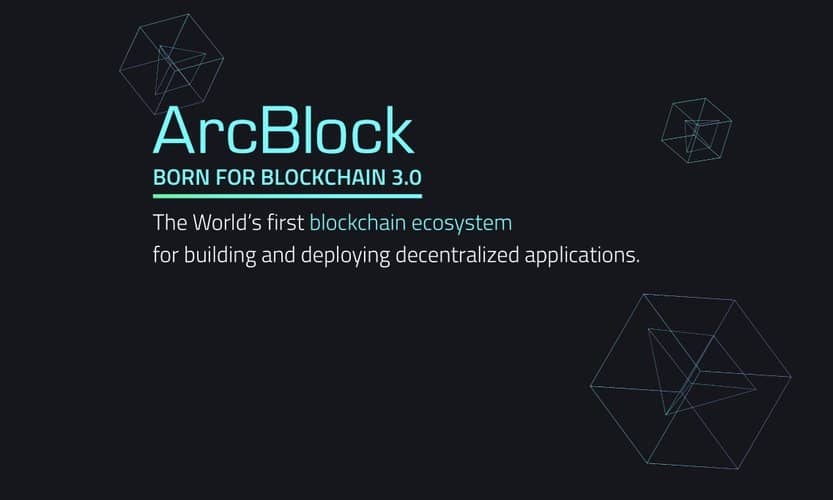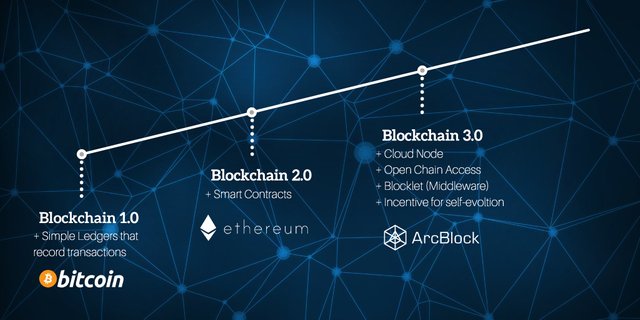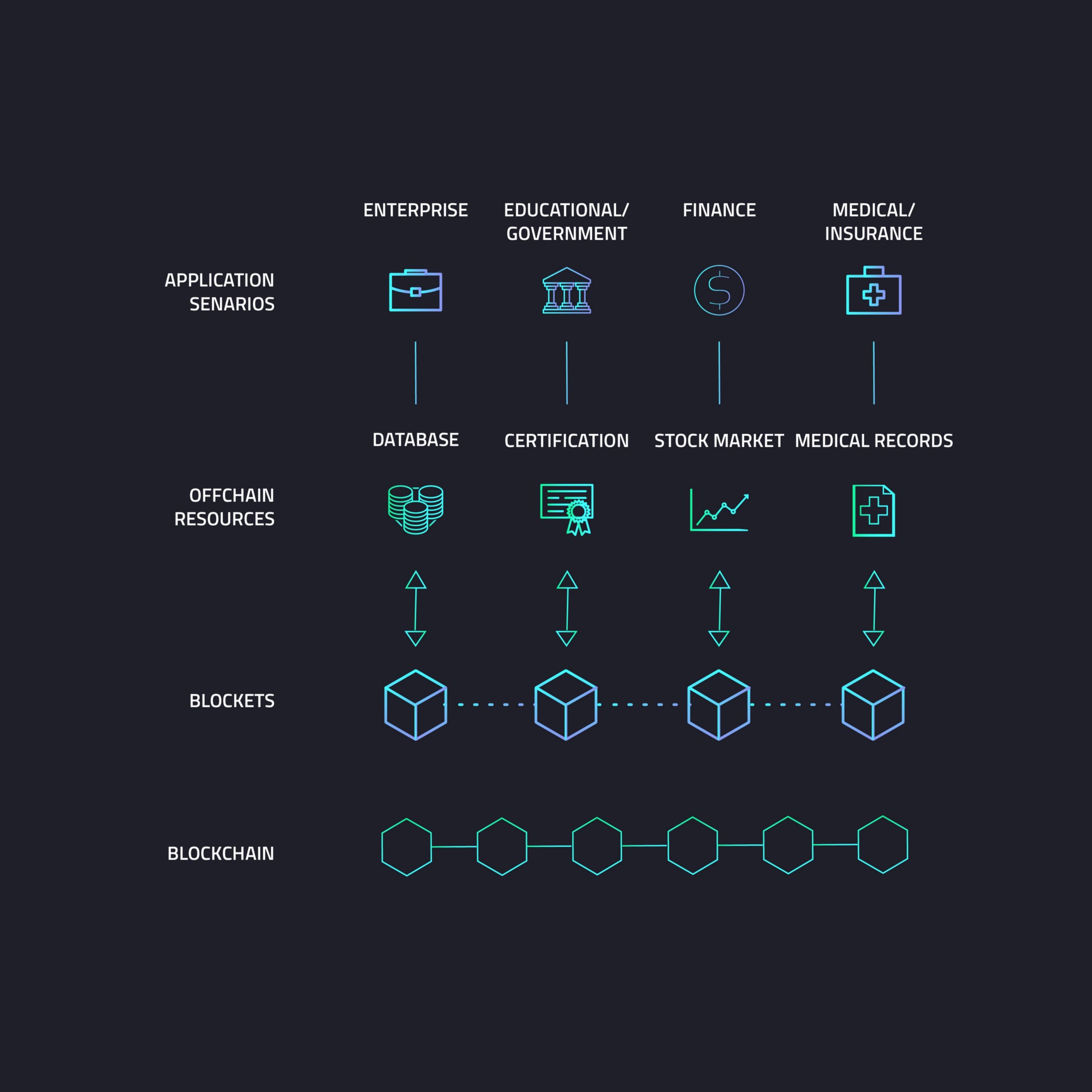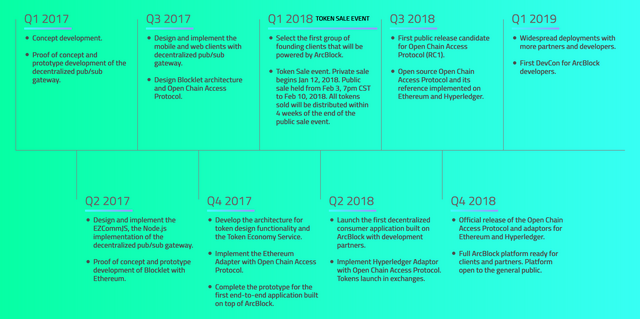ArcBlock Introduces the Open Chain Access Protocol

The Concept of DApps
An inception of the Ethereum blockchain with its ability to store and use the functional pieces of code within the blockchain gave rise to an idea of decentralized applications, so-called DApps. Probably initially Ethereum didn't set such an ambitious goal; the primary purpose of code on blockchain or "Smart Contracts" was to facilitate a more flexible way to conduct transactions, taking into account various additional factors and conditions. Nevertheless, as things stand now, the concept of decentralized applications or DApps has now transcended the boundaries of the simple transaction supporting code. In fact, many predict that the technology will radically reshape the world we live in now, creating such revolutionary projects as Distributed Autonomous Government (DAO). That's right, a digital government, which will be essentially an application, distributed throughout Ethereum nodes.
To break it down, the core of the paradigm of decentralized applications is that they are not executed on a single server that can at any moment be shut down, but on each full node of the blockchain. Architecturally it's naturally achieved by incorporating those apps into the structure of blockchain itself. Among other things, it means that such application is virtually impossible to shut down, plus all the data it generates also cannot be altered or deleted. (Since that data is also recorded on the blockchain) For example, there exists a DApp version of Twitter. The developers claim that it's a version of Twitter free of censorship. I'd say more, it would be impossible to censor it due to its very nature. Since all the twits are stored on the blockchain that technically cannot be altered. Another intrinsic feature of DApps is that they are naturally related to the blockchain and transactions, which generally defines the scope of their application.
The Problems of Decentralised Applications.
DApps spawned a lot of questions and debates, including such point of contention as: Should those applications be fully on-chain or if part of the DApp is hosted off-chain, does it defeat its purpose as a decentralized app? For example, considering popular project CriptoKitties, many argue that because part of that platform is located off-chain on the proprietary project servers it's not a truly decentralized app. In fact, it can be shut down if those project servers will be switched off. The truth is that the complex projects simply cannot be built entirely on the blockchain. First, blockchain is not designed to store the huge amount of data a complex project might require, like graphics and multimedia. Or rather it would be very costly. For example to store large amounts of information on the Ethereum blockchain is very expensive in terms of gas. Not to mention, that such overblown blockchain will create a situation when it'll be difficult for full-nodes to replicate it. So presently, the complex blockchain applications generally consist of on-chain and off-chain parts. The former is stored on blockchain and the latter on the servers, supporting the project.

ArcBlock
Another problem related to the development of DApps is that blockchain at the present moment doesn't have an interface that would allow programmers to work with it on a high level of abstraction. For example, the programmers working with databases don't need to know the internal mechanics of those databases, plus their programs can be easily ported between different kinds of databases. This is, once again, not the case for blockchain applications. Essentially the developers need to choose early on which type of blockchain they are going to support.
ArcBlock is a project, currently working on the creation of such interface that would serve as an intermediate layer between the app developers and the internal technical aspects of blockchain. The project is founded by two former Microsoft researchers, Robert Mao and Flavien Charlon, who was also a founder of such fundamental projects as Colored Coins, Open Assets Protocol, and Openchain. The ArcBlock project implements a technology called "Open Chain Access Protocol" architecturally similar to the Open Database Connectivity interface for databases. The access to a particular blockchain is organized through blockchain adapters, designed to work with the interfaces of the specific blockchains, on top of which work Common Chain APIs. Common Chain APIs, in turn, provide the developers with an interface, allowing them to work blockchain on a higher level of abstraction. The programming of chain adapters facilitating a low-level interface to a specific blockchain can be done by the communities surrounding certain blockchains or forks.

The central element of the ArcBlock technological stack is Blocklet. Being a main building block within ArcBlock platform, Blocklet is based on the concept of microservices. Microservice architecture structures an application as a number of the loosely coupled services, which helps to achieve a high level of modularity. This is crucial in terms of its support and further development. As an intermediate layer Blocklets operate with on-chain as well as off-chain parts of application, which makes them able to work simultaneously with the external data sources and APIs as well as application business logic and resources and at the same time operate blockchain data, accessing it through Open Chain Access Protocol.
In 2018 The ArcBlock project is planning to launch the first decentralized apps based on ArcBlock platform's architecture. Also, during this year the Open Chain Access protocol is going to get an implementation for Ethereum, Hyperledger, etc.
Roadmap

Starting from February 3th, 2018 ArcBlock conducts a public sale, aiming to distribute 186,000,000 ABT Tokens.

This is my @originalworks
Congratulations! This post has been upvoted from the communal account, @minnowsupport, by popeye from the Minnow Support Project. It's a witness project run by aggroed, ausbitbank, teamsteem, theprophet0, someguy123, neoxian, followbtcnews, and netuoso. The goal is to help Steemit grow by supporting Minnows. Please find us at the Peace, Abundance, and Liberty Network (PALnet) Discord Channel. It's a completely public and open space to all members of the Steemit community who voluntarily choose to be there.
If you would like to delegate to the Minnow Support Project you can do so by clicking on the following links: 50SP, 100SP, 250SP, 500SP, 1000SP, 5000SP.
Be sure to leave at least 50SP undelegated on your account.
This post has received a 0.13 % upvote from @drotto thanks to: @cryptotaofficial.